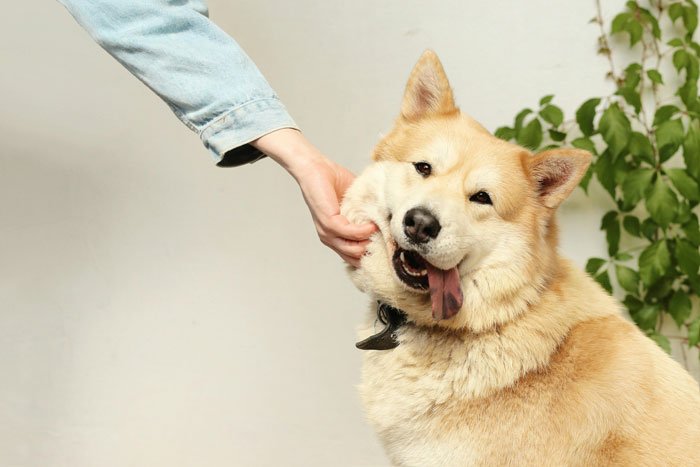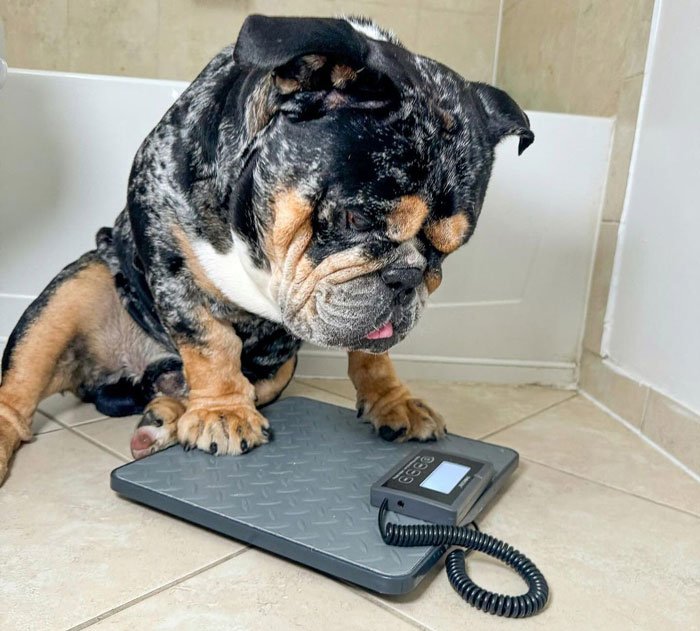Determining Your Dog’s Ideal Weight
Maintaining your dog’s ideal weight is essential for their overall health and well-being. Proper weight management can significantly reduce the risk of serious health conditions such as arthritis, diabetes, and heart disease, and may even extend their lifespan.
Assessing Your Dog’s Weight
To determine if your dog is at a healthy weight, you can use a combination of visual assessments and Body Condition Scoring (BCS).

Visual Inspection
– The Rib Test: Feel your dog’s ribs by placing your hands on their ribcage. A dog at an ideal weight will have ribs that are easy to feel but not overly prominent. If the ribs are very visible or feel sharp, your dog might be underweight. Conversely, if you have to press hard to feel the ribs through a thick layer of fat, your dog may be overweight.
– The Overhead View: Stand above your dog and observe their shape. Ideally, you should see a gentle inward curve behind the ribs, creating a subtle waistline. An overweight dog may have a more barrel-shaped appearance with no clear waistline, while an underweight dog may have an exaggerated, tucked-in waist. Breed-specific traits, such as a Greyhound’s deep chest or a Bulldog’s stocky build, will affect this appearance.

– The Side Profile: Look at your dog from the side and focus on the belly area. A dog at a healthy weight will have a visible abdominal tuck, where the belly slopes upward after the ribs. An overweight dog might have a sagging belly or a straight line from ribs to rear, while an underweight dog may appear gaunt with a pronounced abdominal tuck.
Body Condition Scoring (BCS)
Visual assessments are helpful, but Body Condition Scoring (BCS) provides a more precise evaluation. BCS is a standardized system used by veterinarians to assess a dog’s body condition based on the visibility and feel of key areas.

– What is BCS? BCS uses a scale to categorize dogs based on their body condition. There are two main versions:
– 5-Point Scale: Common in North America, this scale categorizes dogs as emaciated, underweight, ideal weight, overweight, or obese.
– 9-Point Scale: Used in Europe and Australia, this scale provides more detailed distinctions, ranging from very thin to severely obese.
– Why Use BCS?
– Standardized Assessment: Ensures consistency in evaluating your dog’s condition, whether at home or with your vet.
– Comprehensive Evaluation: Adds a tactile element to visual checks, providing a fuller picture of your dog’s body condition.
– Tracking Changes: Helps monitor weight changes over time, especially during weight management programs.
Performing an At-Home BCS Assessment
1. Find a Reliable Chart: Look for a BCS chart that includes clear images and descriptions for the 9-point scale. The World Small Animal Veterinary Association (WSAVA) offers a helpful BCS chart for dogs.
2. Combine Visuals and Touch: Review the visual cues and assess the following:
– Ribs: Check how visible and palpable the ribs are.
– Waistline: Observe the inward curve from above and the side.
– Abdominal Fat: Feel the fat deposits on your dog’s underside.
3. Assign a Score: Use the chart to match your dog’s condition with the appropriate BCS score. Practice will help you become more accurate.
Simplified BCS 9-Point Scale
– 1/9: Emaciated
– 2/9: Very Thin
– 3/9: Thin
– 4-5/9: Ideal Weight
– 6/9: Overweight
– 7/9: Heavy
– 8/9: Obese
– 9/9: Severely Obese
The Ideal BCS
– On the 9-point scale, a score of 4 or 5 indicates an ideal body condition.
– On the 5-point scale, a score of 3 is considered ideal.

Understanding Your Dog’s Ideal Weight
Breed standards can provide general weight ranges, but a dog’s ideal weight also depends on their size, build, and activity level. Always consider these factors along with visual and BCS assessments.
Finding Breed Information
– National Breed Clubs: Check with organizations like the American Kennel Club or The Kennel Club.
– Veterinary Websites: Reliable sources such as VCA Hospitals often provide breed-specific weight information.
Calculating Target Weight
Once you have your dog’s BCS, you can estimate their target weight using a formula developed by researchers. This formula involves subtracting 5 from the BCS, multiplying by 10, adding 100, and then dividing 100 by the result. Multiply this final number by your dog’s current weight to estimate their ideal weight.

Additional Factors
– Breed Predispositions: Some breeds are more prone to obesity. Be vigilant with breeds known for weight issues.
– Age: Weight needs change with age. Puppies and senior dogs have different caloric requirements.
– Activity Level: Active dogs require more calories than less active ones.
– Overall Health: Health conditions can affect weight. Consult your vet if you notice significant weight changes.
Conclusion
Understanding and managing your dog’s ideal weight is vital for their health. Regularly tracking their weight and BCS, alongside breed considerations, helps ensure they stay in optimal shape. Always consult your veterinarian for personalized advice and guidance.




